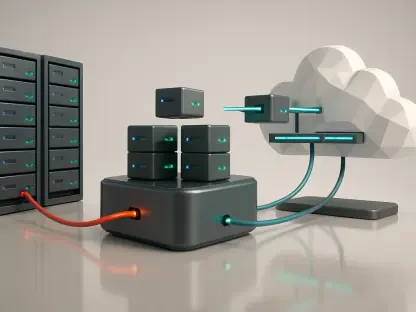In the rapidly evolving landscape of digital infrastructure, Iris Energy Limited, rebranded as IREN Limited since November 2024, stands out as a company attempting to straddle two high-stakes industries: Bitcoin mining and AI cloud services. Headquartered in Sydney, Australia, and founded in 2018 by brothers Daniel and William Roberts, IREN has built its foundation on the innovative use of renewable energy to power data centers. What began as a sustainable Bitcoin mining operation has transformed into a dual-focused entity, with a significant pivot toward high-performance computing (HPC) for AI workloads since 2024. This shift comes amid challenges in the cryptocurrency space, particularly following the 2024 Bitcoin halving that slashed mining rewards, while the AI cloud market is projected to soar to $427 billion by 2029. The central question emerges: can a company rooted in the volatile world of cryptocurrency successfully scale into the capital-intensive and competitive AI sector without overextending its resources? This exploration delves into IREN’s strategic framework, financial health, operational milestones, and the broader industry trends shaping its path, aiming to uncover whether this ambitious balancing act is sustainable in a dynamic and demanding environment.
Strategic Foundations and Business Model
Bitcoin Mining: A Sustainable Core
IREN’s origins in Bitcoin mining are deeply tied to its commitment to sustainability, utilizing 100% renewable energy to power operations across facilities in British Columbia, Canada, and Texas, USA. Achieving a mining capacity of 50 exahashes per second (EH/s) by mid-2025, the company commands a notable 6% share of the global hash rate, positioning it among industry leaders. The use of low-cost electricity, averaging $0.033 per kilowatt-hour primarily from hydroelectric sources, has resulted in impressive margins of 76% in this segment. This cost advantage not only enhances profitability but also aligns with environmental priorities, distinguishing IREN in a sector often criticized for high energy consumption. The focus on renewable energy serves as a strategic pillar, offering resilience against fluctuating power costs that plague many competitors and providing a buffer against regulatory pressures targeting carbon-intensive industries.
Beyond the sustainability edge, IREN’s Bitcoin mining operations benefit from vertical integration, owning critical assets like land and power resources alongside data centers. This structure allows for greater control over operational costs and scalability, which are essential in a market where profitability is increasingly squeezed by events like the 2024 halving. While the segment generated $184.1 million in fiscal year 2025 (FY25), the inherent volatility of cryptocurrency prices remains a persistent challenge. The company’s ability to maintain efficiency and adapt to declining rewards will be crucial as it balances this core business with newer ventures. Moreover, the mining infrastructure provides a foundation that can be repurposed or expanded for other computing needs, a flexibility that underpins IREN’s broader strategic vision in diversifying its revenue streams.
AI Cloud Services: A High-Growth Pivot
Since 2024, IREN has embarked on an ambitious journey into AI cloud services, targeting high-performance computing for applications like machine learning and large language model training. By September 2025, the company had scaled its capacity to 23,000 GPUs, tapping into a market currently estimated at $375 billion, with significant growth projected in the coming years. This pivot is driven by the recognition that AI workloads demand immense computational power, an area where IREN’s existing data center infrastructure offers a head start. The strategic alignment with industry leaders through partnerships, such as NVIDIA Preferred Partner status, bolsters credibility and access to cutting-edge technology, positioning the company to meet the surging demand for AI solutions across various sectors.
However, entering the AI cloud space introduces a different set of challenges, including substantial upfront investments and fierce competition from established hyperscalers. IREN’s approach leverages its renewable energy advantage to keep operational costs low while rapidly deploying GPU clusters to capture market share. The goal of achieving a $500 million annualized run-rate revenue by Q1 2026 reflects bold ambition, but execution risks loom large given the capital intensity of this expansion. Projects like the 50MW Horizon 1 liquid-cooled AI data center, set for completion soon, are critical to scaling capacity. The success of this segment hinges on securing long-term client contracts and maintaining technological relevance in a fast-evolving field, all while ensuring that resources are not diverted excessively from the Bitcoin mining core.
Financial Performance and Market Dynamics
Revenue Growth and Profitability
The financial results for FY25 paint a picture of remarkable growth for IREN, with revenue climbing to an impressive $501 million, marking a 168% increase year-over-year. This surge was accompanied by a net income of $86.9 million, a stark contrast to the $28.9 million loss reported in the prior year, signaling a significant turnaround in operational success. Bitcoin mining accounted for $184.1 million of the total revenue, underscoring its role as a steady contributor despite market fluctuations. Meanwhile, the nascent AI cloud services segment shows early promise for explosive growth, contributing to the optimism surrounding the company’s diversified approach. Adjusted EBITDA also saw a dramatic rise, increasing by 395% to $269.7 million, which highlights strong operational efficiency even amidst substantial capital expenditures required for expansion across both sectors.
This financial momentum reflects IREN’s ability to capitalize on favorable market conditions and strategic investments, particularly in infrastructure that supports dual operations. However, the high costs associated with scaling AI capacity, including GPU procurement and data center construction, place pressure on maintaining profitability over the long term. With cash reserves standing at $565 million as of August 2025, there is some buffer to support growth, but a debt load of $0.88 billion raises questions about financial leverage. The balance between reinvesting profits into expansion and managing debt obligations will be a critical factor in sustaining this upward trajectory. Investors and analysts alike are keenly observing whether these figures represent a sustainable trend or a temporary peak driven by market hype.
Stock Performance and Valuation Concerns
IREN’s stock has captured significant attention in the market, closing at $50.46 on October 3, 2025, and reflecting a staggering 560% rise over the past year, which translates to a market capitalization of $13.72 billion. This dramatic increase signals strong investor confidence in the company’s dual-growth strategy and its potential to become a leader in digital infrastructure. Retail sentiment on platforms like Reddit and StockTwits remains largely bullish, driven by excitement over AI expansion and robust FY25 results. Institutional ownership, at 48.64%, further underscores the belief in IREN’s long-term prospects, with notable increases in stakes by major firms in recent quarters. However, this rapid ascent has not gone unquestioned, as the stock’s high price-to-earnings ratio of 85.53 sparks debates about whether the current valuation accurately reflects intrinsic value.
Analyst opinions reveal a divided landscape, with a consensus rating of “Moderate Buy” but price targets spanning a wide range from a conservative $24 to an optimistic $82. Those on the cautious side, such as JPMorgan, point to risks of overvaluation and the capital-intensive nature of AI growth, while bullish forecasts from firms like Roth/MKM hinge on the transformative potential of the AI segment. Controversies, including insider share sales by Co-CEOs totaling $66.4 million in September 2025, have also stirred mixed reactions among investors, with some viewing it as routine and others as a cautionary signal. The divergence in market sentiment suggests that while IREN enjoys strong support, maintaining investor trust will require consistent delivery on growth targets and transparency in financial management to mitigate concerns over potential overextension.
Operational Expansion and Competitive Landscape
Infrastructure Scale and Future Projects
IREN’s operational footprint is underpinned by a robust grid-connected power capacity of 2.91 GW, a critical asset that supports its ambitions in both Bitcoin mining and AI cloud services. Facilities in regions like British Columbia and Texas leverage renewable energy sources, primarily hydroelectric power, to ensure cost efficiency and sustainability. This infrastructure not only powers the current 50 EH/s mining capacity but also facilitates the rapid rollout of GPU clusters for AI workloads, with 23,000 units deployed by September 2025. The company’s vertical integration—controlling land, energy, and data center assets—provides a streamlined approach to scaling operations, reducing reliance on external providers and enhancing responsiveness to market demands. This setup positions IREN to handle the energy-intensive nature of its dual focus with a degree of agility that many competitors lack.
Looking ahead, major projects are set to define IREN’s growth trajectory, including the 50MW Horizon 1 liquid-cooled AI data center, expected to be operational by late 2025, and the massive 1.4GW Sweetwater 1 facility slated for April 2026. These initiatives represent significant steps toward expanding capacity for HPC workloads while maintaining mining output. However, the scale and cost of these developments introduce notable execution risks, from construction delays to unforeseen regulatory hurdles in energy markets. A $674 million investment in GPU procurement further underscores the financial commitment required to double AI capacity, raising the stakes for timely delivery and client acquisition. The success of these projects will be a litmus test for whether IREN can translate its ambitious plans into tangible operational gains without compromising financial stability.
Competing in Two Arenas
In the Bitcoin mining arena, IREN faces stiff competition from industry giants like Marathon Digital Holdings, with 58 EH/s, and Riot Platforms, at 33 EH/s, both of whom dominate in terms of scale and market presence. IREN’s edge lies in its renewable energy model, which delivers electricity at a fraction of the cost many rivals incur, sustaining high margins even as mining rewards diminish after the 2024 halving. This cost advantage, combined with a 6% global hash rate share, allows the company to remain competitive despite not matching the sheer capacity of top players. Additionally, the ability to repurpose mining infrastructure for other computing needs offers strategic flexibility that could mitigate risks tied to cryptocurrency market swings, though navigating this crowded field requires constant innovation in efficiency and operational uptime.
Switching to AI cloud services, IREN encounters a different competitive dynamic, contending with hyperscalers like Amazon Web Services and specialized GPU providers who dominate the market with vast resources and established client bases. Here, IREN’s strategy hinges on leveraging existing data center infrastructure for faster deployment and lower costs, bolstered by its NVIDIA Preferred Partner status to access premium hardware. While this positions the company as an emerging contender, the AI sector’s rapid evolution demands continuous investment in cutting-edge technology and robust customer support to secure long-term contracts. Differentiation through sustainability and cost efficiency remains central, but overcoming the brand recognition and ecosystem depth of larger players will test IREN’s ability to carve out a meaningful niche in this high-growth space.
Risks and Opportunities
Challenges in a Dual Focus
Navigating a dual business model presents IREN with a complex set of challenges, starting with the inherent volatility of Bitcoin prices that can unpredictably impact mining revenue, which contributed $184.1 million in FY25. The 2024 halving event further reduced block rewards, intensifying pressure on profitability in this core segment and highlighting the need for operational efficiency to offset declining returns. Simultaneously, the pivot to AI cloud services, while promising, demands substantial capital expenditure, with investments like the $674 million GPU procurement straining financial resources. A debt load of $0.88 billion adds another layer of concern, as high leverage during rapid expansion could limit flexibility if market conditions worsen or if projected AI revenues fall short of the $500 million run-rate target by Q1 2026.
Beyond financial risks, regulatory uncertainties in both energy and cryptocurrency markets pose significant hurdles for IREN’s operations. Evolving policies on energy consumption, particularly in North America where the company operates, could introduce unexpected costs or restrictions on data center activities. Additionally, controversies such as short-seller reports from July 2024 questioning the feasibility of the AI pivot, alongside creditor lawsuits over alleged debts, have raised reputational concerns that could dent investor confidence. Execution risks tied to large-scale projects like Horizon 1 and Sweetwater 1 further complicate the landscape, as delays or cost overruns could disrupt growth plans. Balancing these multifaceted challenges requires meticulous strategic planning to ensure neither segment is neglected at the expense of the other.
Growth Catalysts and Strategic Advantages
Despite the hurdles, IREN is well-positioned to seize substantial opportunities, particularly in the AI cloud services market, where explosive growth offers a pathway to significant revenue diversification. Targeting a $500 million annualized run-rate by Q1 2026, the company stands to benefit from the surging demand for HPC solutions as industries increasingly adopt AI technologies. The existing infrastructure, originally built for mining, provides a cost-effective foundation for scaling GPU capacity, giving IREN a head start over new entrants. Strategic moves, such as deploying 23,000 GPUs by September 2025 and securing partnerships with technology leaders like NVIDIA, enhance the company’s ability to meet client needs swiftly and establish credibility in a competitive field.
Moreover, IREN’s unwavering commitment to 100% renewable energy not only reduces operational costs to $0.033 per kilowatt-hour but also aligns with growing environmental, social, and governance (ESG) priorities, appealing to sustainability-focused investors. This focus offers a distinct advantage as regulatory scrutiny intensifies on carbon-intensive industries, potentially positioning IREN as a leader in green digital infrastructure. Near-term catalysts, including GPU deployments and data center energizations, alongside upcoming earnings reports, could further drive positive market sentiment if milestones are met. Long-term, the scalability of secured power resources at 2.91 GW supports sustained expansion, provided the company navigates competitive pressures and capital demands effectively. These strengths suggest a promising outlook if strategic execution remains on track.
Future Outlook and Strategic Considerations
Assessing Long-Term Viability
Reflecting on IREN’s journey through FY25, the company demonstrated remarkable financial progress with revenue reaching $501 million and net income climbing to $86.9 million, a clear shift from prior losses that highlights its successful turnaround. The operational scale achieved, with 50 EH/s in Bitcoin mining and 23,000 GPUs in AI cloud capacity by September 2025, underscored its capacity to grow across two demanding sectors. Stock performance, marked by a 560% surge over the past year to $50.46 on October 3, 2025, mirrored investor enthusiasm, though tempered by valuation concerns with a high P/E ratio of 85.53. Challenges, including Bitcoin volatility and the capital intensity of AI expansion, alongside controversies like insider sales, cast shadows over the otherwise robust growth narrative. Yet, the strategic pivot toward AI and unwavering sustainability focus carved a unique position for IREN in the digital infrastructure landscape.
Navigating the Path Ahead
Looking forward, IREN must prioritize the strategic allocation of its $565 million cash reserves to balance debt obligations of $0.88 billion while funding critical projects like Horizon 1 and Sweetwater 1, which are pivotal for capacity growth. Securing long-term AI client contracts will be essential to validate the $500 million revenue target by Q1 2026, while maintaining mining efficiency to weather cryptocurrency market swings. Close monitoring of regulatory developments in energy and digital asset policies will help mitigate external risks, and transparent communication about financial health can address valuation concerns. Leveraging the renewable energy advantage to attract ESG-focused investment could further solidify market trust. As IREN advances, tracking operational milestones and industry trends will provide clarity on whether this dual-engine strategy can sustain momentum in a competitive and volatile environment.









